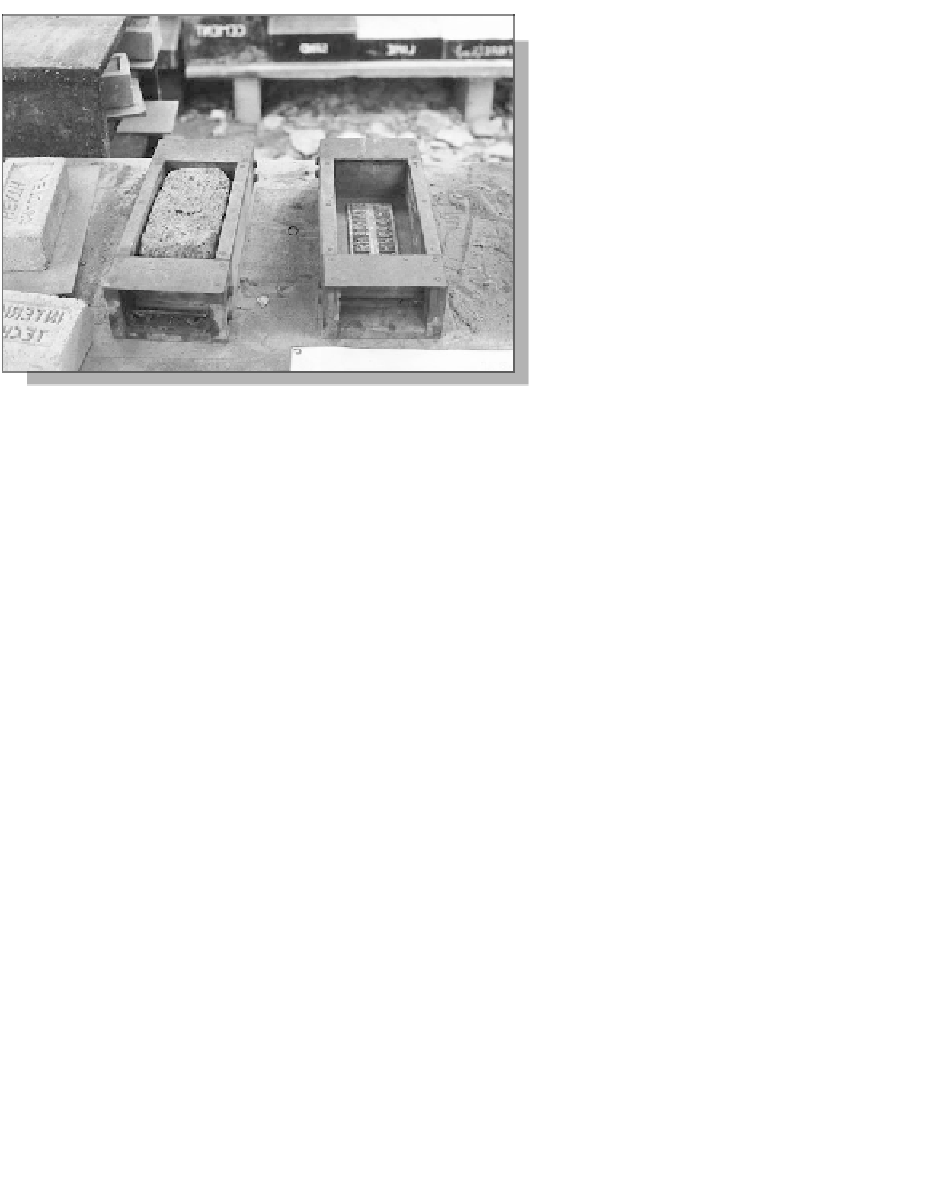Civil Engineering Reference
In-Depth Information
large. In modern brick factories, spe-
cial drying houses are kept very hot
for two to five days.
Firing
When clay is heated up to boiling
point, the water in the pores evapo-
rates, and at 200-300°C the hydrate
water evaporates. After this change
the clay will not revert to a soft clay
with the addition of water, unlike an
air dried earth block. Even in the
Roman Empire bricks were not fired
in temperatures higher than
350-450°C, and this is the case in a
great many buildings that still stand
today, e.g. the Roman Forum.
If fired at higher temperatures, the particles in the stones are pushed nearer to
each other and the brick becomes harder. Between 920 and 1070°C the material
begins to sinter. If the temperature is increased even further, the blocks will
smelt. Higher temperatures are used in the production of fire-proof bricks and
porcelain, using special clay mixtures. To a well trained ear, the temperature at
which a brick was fired can be assessed by hitting it with a hammer. The higher
and purer the sound, the higher the temperature of the firing. This is especially
useful when recycling old bricks.
Clay containing iron turns red when fired, whereas clay containing more than
18 per cent lime turns yellow. There are many different colour variations, deter-
mined by the amount of oxygen used during the firing process. Red brick can
vary from light red to dark brown.
Chamotte is produced from clay with a low iron and lime content. This can
withstand temperatures of up to 1900°C and is classified as fire-proof.
In certain products the brick can be glazed or coloured by the manufactur-
er using compounds such as oxides of lead, copper, manganese, cadmium,
antimony and chromium. To set the glaze onto the brick requires a secondary
firing until the glaze smelts. The temperature of this firing should be well
under the brick's firing temperature so that it does not lose its form or slide
out.
Figure 8.8: Wooden mould for handmade bricks.
Kilns
Many different types of kiln have been used over the years, but almost all belong
to one of three main types: the open charcoal kiln, the circular kiln or the tunnel

